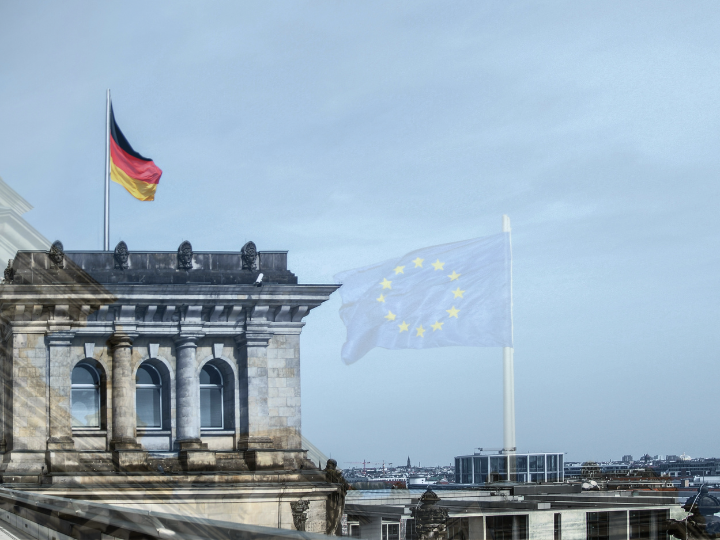By Wang Huiyao*
Next year, in purchasing power parity (PPP) terms, Asian economies will become larger than the rest of the world combined for the first time since the 19th century. Not only is Asia growing richer; as it becomes more integrated, it is also coalescing as a constructive force for global governance.
This emergence is timely. From climate change and demographic crises to technological disruption and yawning inequality, the world faces myriad challenges that require multilateral solutions. However, a lack of global leadership and consensus has stalled reform of global institutions, leaving severe governance deficits.
While Asia has benefited enormously from globalization, it also encapsulates many of the world’s problems. Fortunately, there are growing signs that this vibrant, diverse continent can work together and rise to offer some of the solutions.

Towards a more integrated Asia
If this is to be the Asian century, it will be built by Asians working closer together in their own continent.
Despite Asia’s remarkable rise, its family of nations are often kept apart by difficult geography and even more difficult history. Fortunately, as the mutual benefits of cooperation become ever more apparent, efforts to overcome these barriers and deepen regional integration have gained momentum.
This is evident in the revival of China’s relationships with India, Japan, and South Korea, as well as the reboot of the China-Japan-ROK trilateral summit. Regional cooperation platforms such as APEC, ASEAN and the Shanghai Cooperation Organization are also proliferating.
Asia is also bucking the global trend for trade fragmentation, becoming instead ever more economically integrated via trade, investment and tourism. Previously, this happened from the grassroots up, without an overarching regional free trade agreement of the sort that spurred integration in Europe and North America.
Now, Asia is at the heart of the action for multilateral trade liberalization. Abandoned by the US, the reformed Trans-Pacific Partnership (TPP) (also known as the Comprehensive and Progressive Agreement for Trans-Pacific Partnership CPTPP) has been revived under Asian leadership and came into force at the start of this year. Talks are also progressing towards the Regional Comprehensive Economic Partnership (RCEP). These living agreements will continue to evolve and will likely attract new members, offering a flexible, multi-track path to economic integration in Asia. For example, the more rigorous CPTPP can help to set standards for future trade for advanced economies, while the less-demanding RCEP will offer a way for developing countries to participate in free trade.
Knitting together infrastructure initiatives, trade pacts and other groupings will boost pan-Asian coordination on connectivity and trade liberalization. In turn, this can help fuel a virtuous cycle of mutual gain and closer integration.
A more integrated Asian community – one that brings together developed and developing countries and various economic systems – could also provide the momentum and modalities to reinvigorate multilateralism at the global level. Solutions that have been adapted to Asia’s diverse conditions may well prove to be useful templates for the rest of the world.
China’s role in Asia and the world
Lying at the heart of the regional economy, China will undoubtedly play a central role in the Asian Century. However, it is also an emerging, multipolar century, one in which no single power can unilaterally dictate norms and rules.
China’s global strategy is firmly anchored to this reality, along with the recognition that multilateralism is the only way to meet our transnational challenges and sustain an open, inclusive global economy.
As such, rather than a hegemon or revisionist power, China’s role in Asia and the world will be to uphold the international order while offering innovative solutions to global governance, in line with its responsibility as a major global player.
A key part of this role is to act as a catalyst for integration in Asia and beyond.
Economically, China will remain the engine of growth for Asia and the world. Its contribution to global growth will rise to over 28% by 2023, according to IMF projections. However, the nature of China’s economic role will evolve along with domestic rebalancing.

In the previous phase of globalization, Chinese exports drove global trade as foreign investment came in to help modernize the economy. In globalization 4.0, Chinese imports will play an ever-larger role as Chinese multinationals invest across Asia and the world. From now until 2030, China’s consumption growth is expected to exceed that of the US and Western Europe combined.
China-driven flows of goods, expertise and capital will create opportunities for local communities and producers and help bring the Fourth Industrial Revolution to all corners of Asia. This links to China’s role in the “systems upgrade” necessary to support deeper integration in Asia.
The region still faces major infrastructure gaps that are impeding development and integration. The Belt and Road Initiative (BRI) offers an ideal vehicle to overcome these gaps, acting like a venture capital fund to provide seed money and draw in additional resources for promising projects.
A recent study by the World Bank estimates that if fully implemented, BRI transport projects could increase trade between 1.7% and 6.2% for the world, increasing global real income by 0.7% to 2.9% and helping to lift 7.6 million people from extreme poverty in the process.
To truly fulfill its potential, over the coming years, the BRI will shift towards a more multilateral approach. This will allow the initiative to better pool resources, expertise and perspectives from a diverse range of stakeholders.
The Asian Infrastructure Investment Bank (AIIB), established in 2015 and now listing almost 100 members, is a prime example of how the BRI can be multilateralized. Promoting the AIIB model and cooperation with other multilateral institutions can help to address concerns about the BRI being too Sinocentric and engage more participants as meaningful stakeholders.
For all its promise, the sustained growth of Asia in this century is not preordained. The leaders of China and its neighbours will have to navigate many risks and challenges along the way.
Leadership 4.0, the theme of this year’s recent Annual Meeting of the New Champions in Dalian, is a timely reminder of how our era of complexity and change calls for new forms of leadership and collaboration.
By heeding this call, the leaders of today and tomorrow can help ensure that the Asian century brings fruits not only for Asians, but for people around the world.
*Founder and President, Center for China and Globalization
**First Published in weforum




 By: N. Peter Kramer
By: N. Peter Kramer

